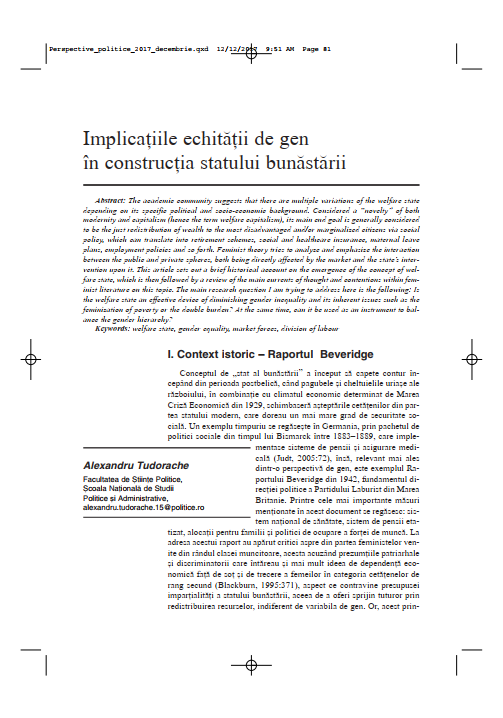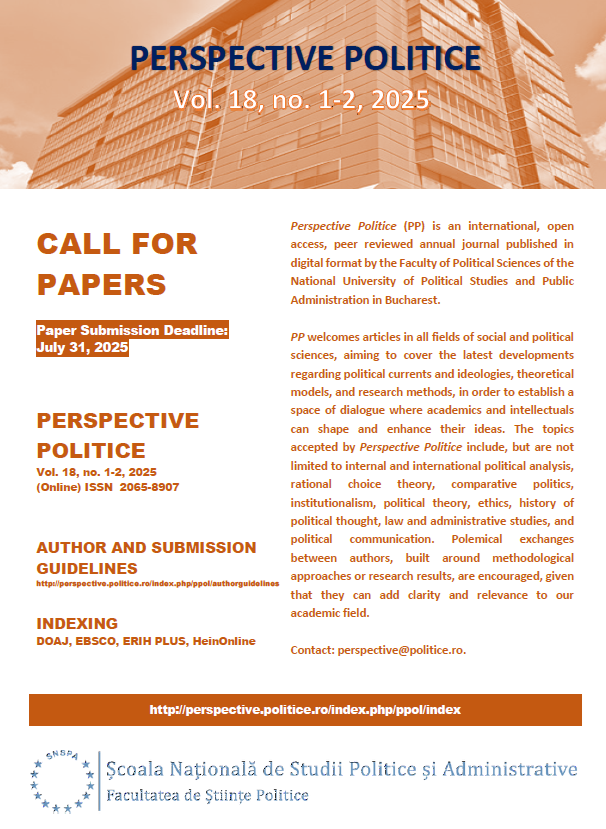Implicatiile echitatii de gen in constructia statului bunastarii
Abstract
The academic community suggests that there are multiple variations of the welfare state depending on its specific political and socio-economic background. Considered a “novelty” of both modernity and capitalism (hence the term welfare capitalism), its main end goal is generally considered to be the just redistribution of wealth to the most disadvantaged and/or marginalized citizens via social policy, which can translate into retirement schemes, social and healthcare insurance, maternal leave plans, employment policies and so forth. Feminist theory tries to analyze and emphasize the interaction between the public and private spheres, both being directly affected by the market and the state’s intervention upon it. This article sets out a brief historical account on the emergence of the concept of welfare state, which is then followed by a review of the main currents of thought and contentions within feminist literature on this topic. The main research question I am trying to address here is the following: Is the welfare state an effective device of diminishing gender inequality and its inherent issues such as the feminization of poverty or the double burden? At the same time, can it be used as an instrument to balance the gender hierarchy?




